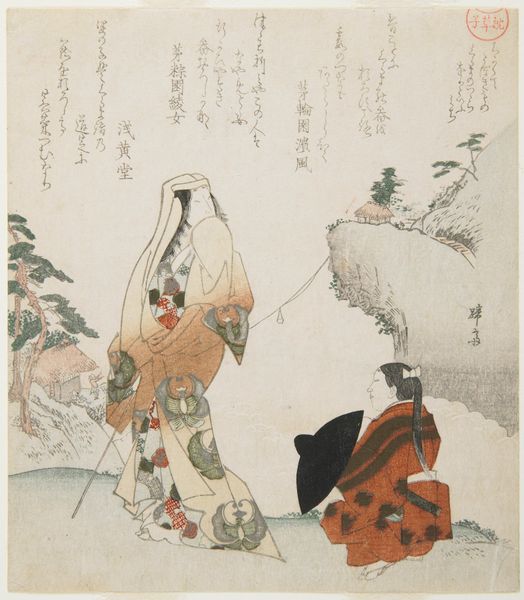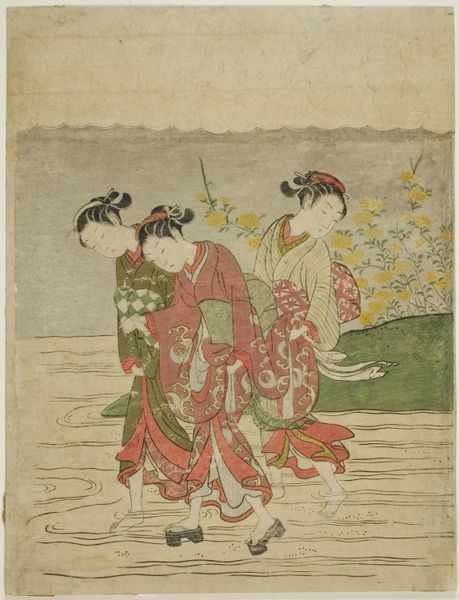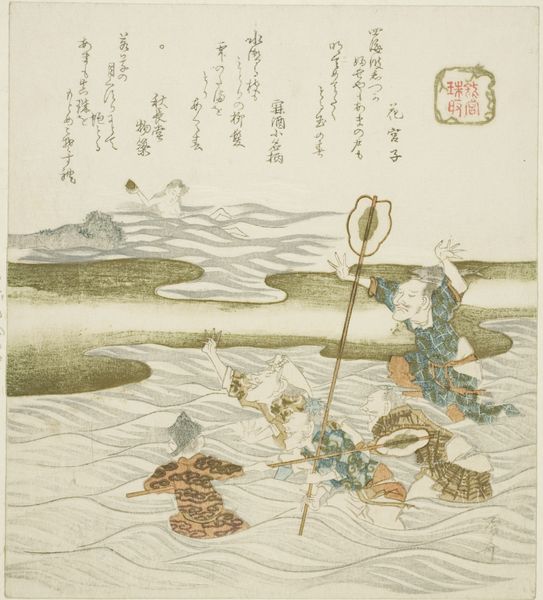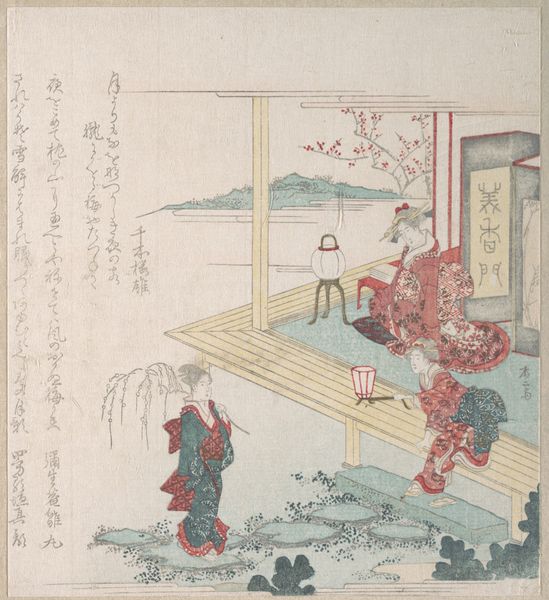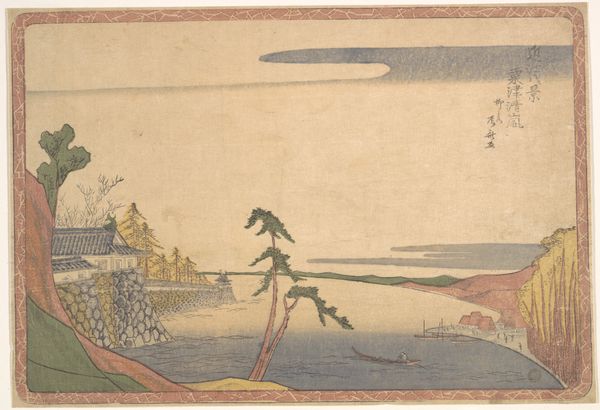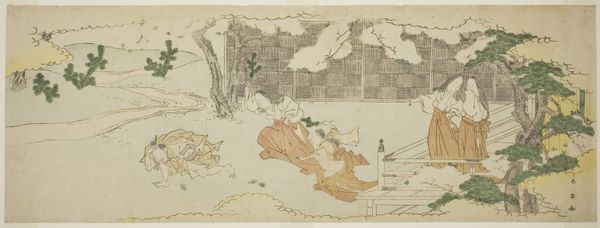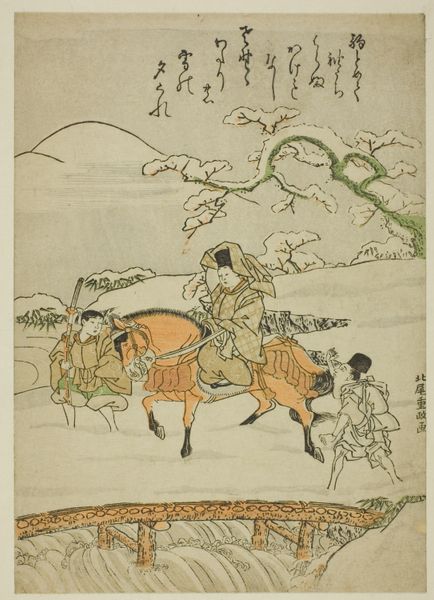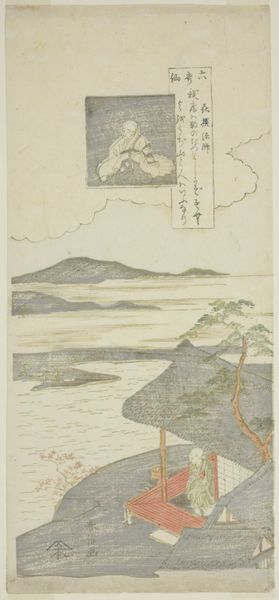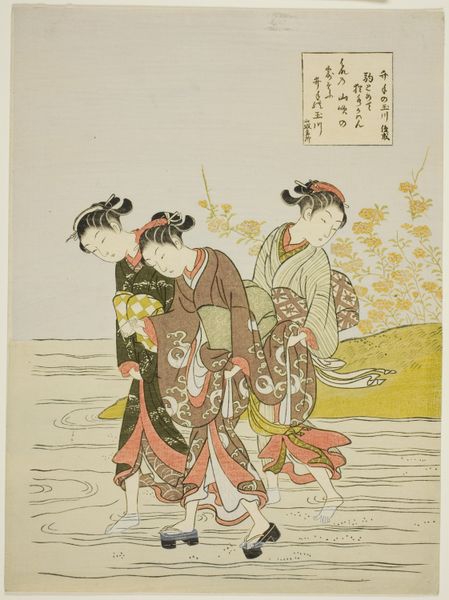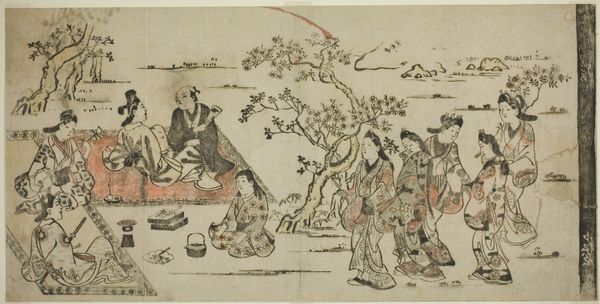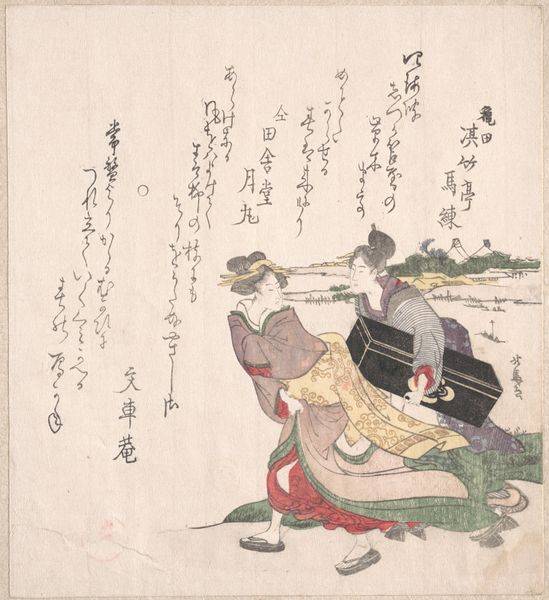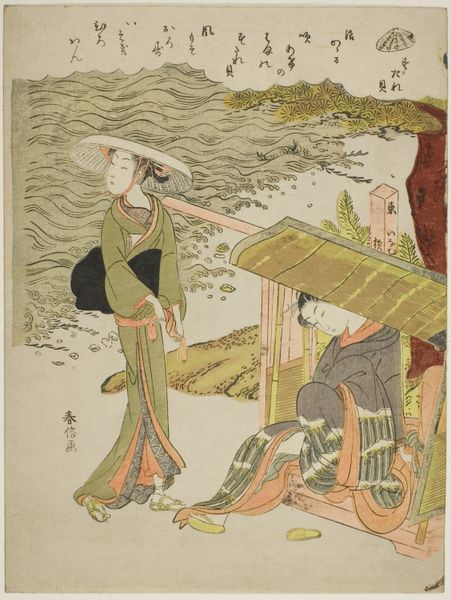
The Jewel River of Plovers in Mutsu Province (Mutsu Chidori no Tamagawa), from an untitled series of Six Jewel Rivers c. 1785
0:00
0:00
print, paper, ink, woodblock-print
# print
#
asian-art
#
landscape
#
ukiyo-e
#
paper
#
ink
#
woodblock-print
Dimensions: 12 3/4 × 8 11/16 in.
Copyright: Public Domain
Curator: Let’s turn our attention to a woodblock print crafted around 1785 by Rekisentei Eiri, entitled "The Jewel River of Plovers in Mutsu Province." Part of a series, it’s a vibrant scene rendered with ink and color on paper. Editor: My first impression is one of dynamic serenity. The subdued colors evoke a sense of peace, yet the placement of the figures and birds conveys a kind of lively movement throughout the landscape. Curator: Indeed. Eiri’s technique involved a painstaking process of carving the image into separate woodblocks, one for each color. The registration – aligning the blocks perfectly for each impression – required considerable skill and a deep understanding of materials. You can almost feel the hand of the artisan in the details. Editor: Absolutely. The plovers themselves hold great significance. In Japanese art, birds often symbolize freedom and travel, but the plover, or chidori, is more closely tied to overcoming adversity. It represents perseverance in the face of difficult times. The jewel river could symbolize wealth or natural beauty. It is so important to decode how artists draw on symbolic history. Curator: From a material perspective, it's fascinating to consider the paper itself. These prints were made using traditional Japanese paper making methods. The fibers give the paper its strength and receptive surface. This would then influence how the ink settles and the colors manifest. Editor: I agree, and the artist cleverly contrasts those earthbound struggles with the graceful pine, symbolizing longevity and steadfastness. You notice, though, the musicians below the tree; it almost feels as though they are the visual representation of the flow of water in the landscape, binding it together. Curator: It really underscores how labor is involved in every step of creating art like this. From sourcing raw materials and understanding the unique behaviors to using specialized tools. It provides such great context on the society that these images arise from. Editor: Thinking about these layered symbolic associations does give us greater cultural awareness, doesn’t it? This piece reflects the interconnectedness between the natural world and the human experience. Curator: Ultimately, examining this woodblock, with the careful material selection, shows that craft and meaning are inextricable. Editor: Yes. Now, when I consider the piece in its entirety, my earlier sense of peace has expanded, informed by your insights. Thanks.
Comments
No comments
Be the first to comment and join the conversation on the ultimate creative platform.
